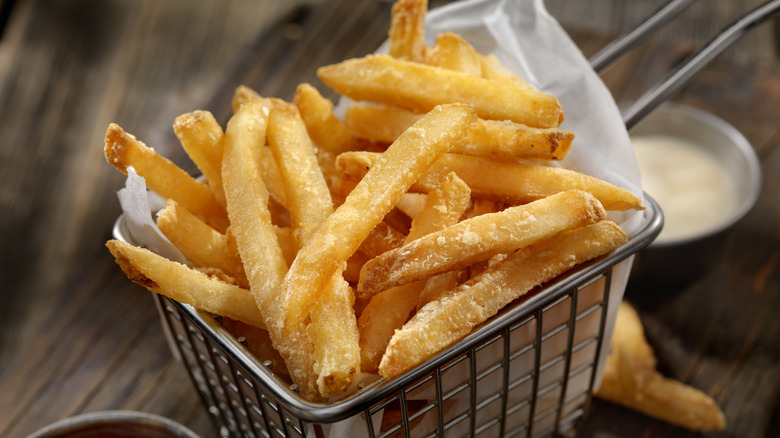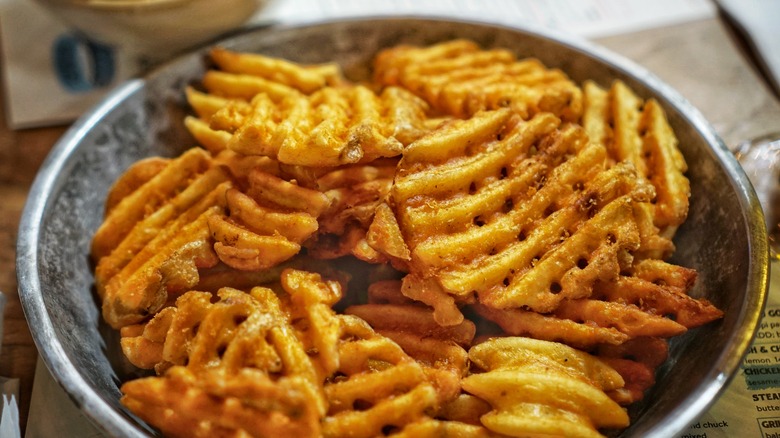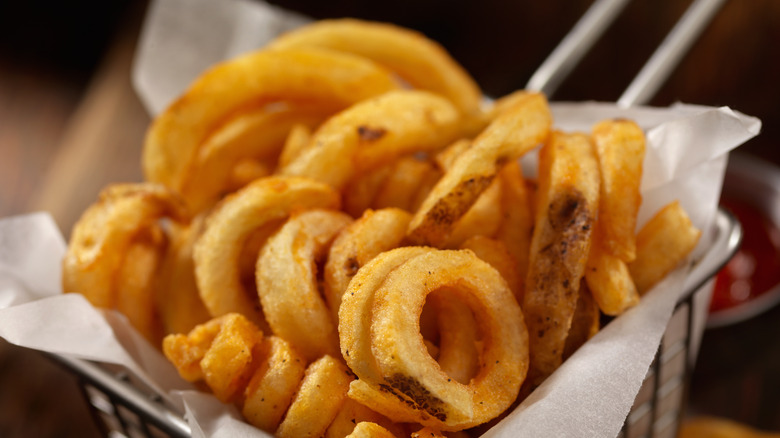Does The Shape Of A French Fry Change Its Taste At All?
French fries are one of America's staple foods, a side dish (or heck, a full meal) beloved by pretty much everyone. Unless you have a potato allergy, there are not really any dietary restrictions that come into play with the core concept of a fried potato. But likewise, all of us who enjoy french fries have specific preferences. You may enjoy a waffle fry the most, a curly fry, or a crinkle-cut fry. One way or another, though, there's a shape (or shapes) you like more than the others.
But does the shape of a french fry actually change how it tastes? The answer is yes. Sure, it doesn't change the actual content of the potato, and a waffle fry and a steak fry can have the same seasonings. But to deny that the shape impacts taste flies in the face of all logic. Of course, different fry shapes will taste different, and it's not simply down to texture. People who claim different fry shapes don't taste different – or other false facts about french fries — are simply misinformed.
Fried potato tastes different from fluffy potato
But let's get the obvious caveat out of the way first and talk about texture. Texture is absolutely a part of how we taste things, and to say it doesn't impact taste flies in the face of everything we know to be true about one of the basic senses through which we perceive the world. Texture and taste cannot be divorced from each other.
But a fry's shape impacts its taste beyond just its texture because different shapes will have different ratios of fried, crispy surface area to fluffy potato-y center. A mashed potato and a hash brown are both potatoes, but they certainly don't taste the same. It's a given that the same ingredient will not taste the same when you cook it differently, and yet some people will unbelievably insist that fry shape does not affect taste. Which type of fry you prefer thus has a lot to do with which taste (fried potato or fluffy potato) you go for.
Different fry shapes hold seasoning and sauces differently
But the shape of a french fry goes beyond this when it comes to taste because other aspects are at play here. Think about it: Different fry shapes will hold seasoning and dipping sauces differently as their various crevices give these add-ons places to find purchase. A steak fry — not everyone's favorite — is large and flat, so it isn't going to trap seasoning or Thousand Island dressing nearly as well as a waffle fry (which is basically just crevices all the way down). The shape of a french fry thus can't help but affect its taste.
For anyone who's still skeptical, ask yourself this: Is our personal preference for different fry types just a collective hallucination? One of the quickest ways to start an argument online is to ask what the best french fry shape is; are most people really this passionate about which fry shapes taste better if there's no difference in taste between them?
Unfortunately, the science that determines the taste differences between types of french fries does not currently seem to exist. Until it does, we're just going to have to settle for the bone-deep surety that some fries absolutely taste different than others.


